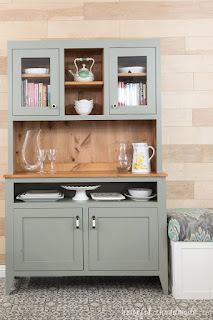Crafting an Elegant Buffet: Woodworking Plans for the Dining Room
Transform your dining room into a haven of sophistication with a handcrafted buffet. This isn't just about storage; it's about creating a statement piece, a focal point that reflects your personal style and enhances the overall ambiance. Forget mass-produced furniture; embrace the artistry of woodworking and build a buffet that speaks volumes about your appreciation for quality craftsmanship. These detailed woodworking plans will guide you through the process, step-by-step, ensuring a stunning result that you'll cherish for years to come.
Choosing the Right Wood and Design
The heart of any successful woodworking project lies in the selection of materials. Consider the overall aesthetic of your dining room. Rich, dark woods like mahogany or walnut create a dramatic, traditional feel, while lighter woods such as oak or maple offer a brighter, more contemporary vibe. Explore different wood grains and finishes to find the perfect match. Your design choice is equally important. Do you envision a sleek, minimalist buffet or a more ornate, traditional piece? Sketch out your ideas, noting dimensions and features. Consider incorporating intricate carvings, stylish hardware, or unique leg designs to personalize your buffet.
Essential Considerations for Wood Selection
- Budget: Different wood types have varying price points.
- Durability: Hardwoods offer superior durability and resistance to scratches.
- Aesthetic appeal: Choose a wood grain and color that complements your existing décor.
- Workability: Some woods are easier to work with than others, especially for beginners.
Detailed Step-by-Step Construction
Once you've finalized your design and chosen your wood, the construction process begins. These plans provide precise measurements and detailed instructions for each stage. Begin by carefully cutting all the pieces according to the plans. Precise cuts are paramount for a flawless finish. Next, assemble the frame, ensuring all joints are tight and secure. Use quality wood glue and clamps to ensure a strong bond. Once the frame is complete, add the shelves and drawers. Pay close attention to drawer slides and hardware placement for smooth operation. Sanding is crucial; meticulous sanding ensures a smooth, even surface for staining or painting.
Key Steps to Ensure Success
- Accurate Measurements: Double-check all measurements before cutting.
- Proper Joint Construction: Utilize appropriate joinery techniques for strength and stability.
- Meticulous Sanding: Achieve a smooth surface for a professional finish.
- Finishing Touches: Carefully apply stain, paint, or varnish for protection and aesthetic enhancement.
Adding the Finishing Touches
The final stage transforms your functional buffet into a true masterpiece. Apply your chosen finish—whether it's a rich stain, a vibrant paint color, or a protective varnish—paying attention to detail. Let the finish cure completely before adding hardware. Choose handles and knobs that complement your design and enhance the overall aesthetic. Consider adding subtle details like decorative molding or inlay work for an extra touch of elegance. Once completed, admire your creation. You've successfully built a stunning buffet that will be the centerpiece of your dining room for years to come, a testament to your woodworking skills and design flair.




0 comments:
Post a Comment
Note: Only a member of this blog may post a comment.